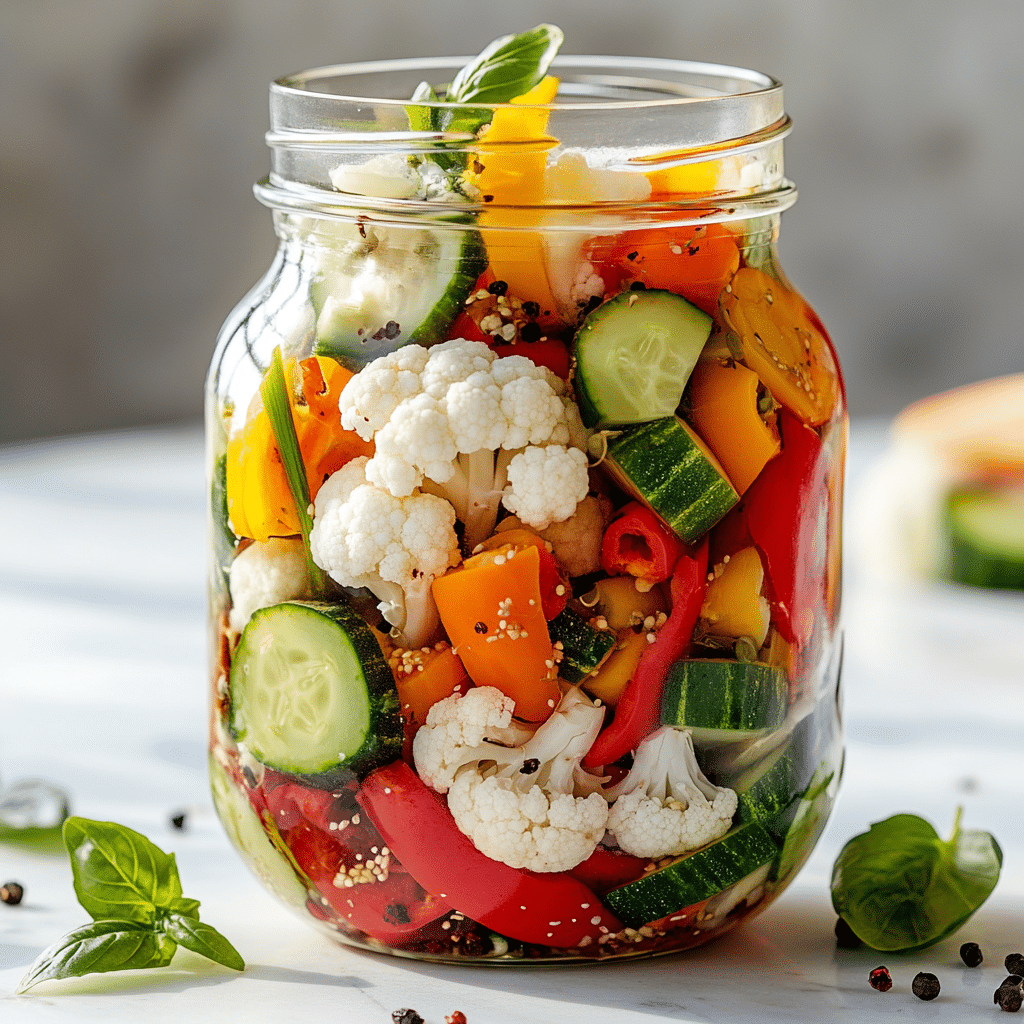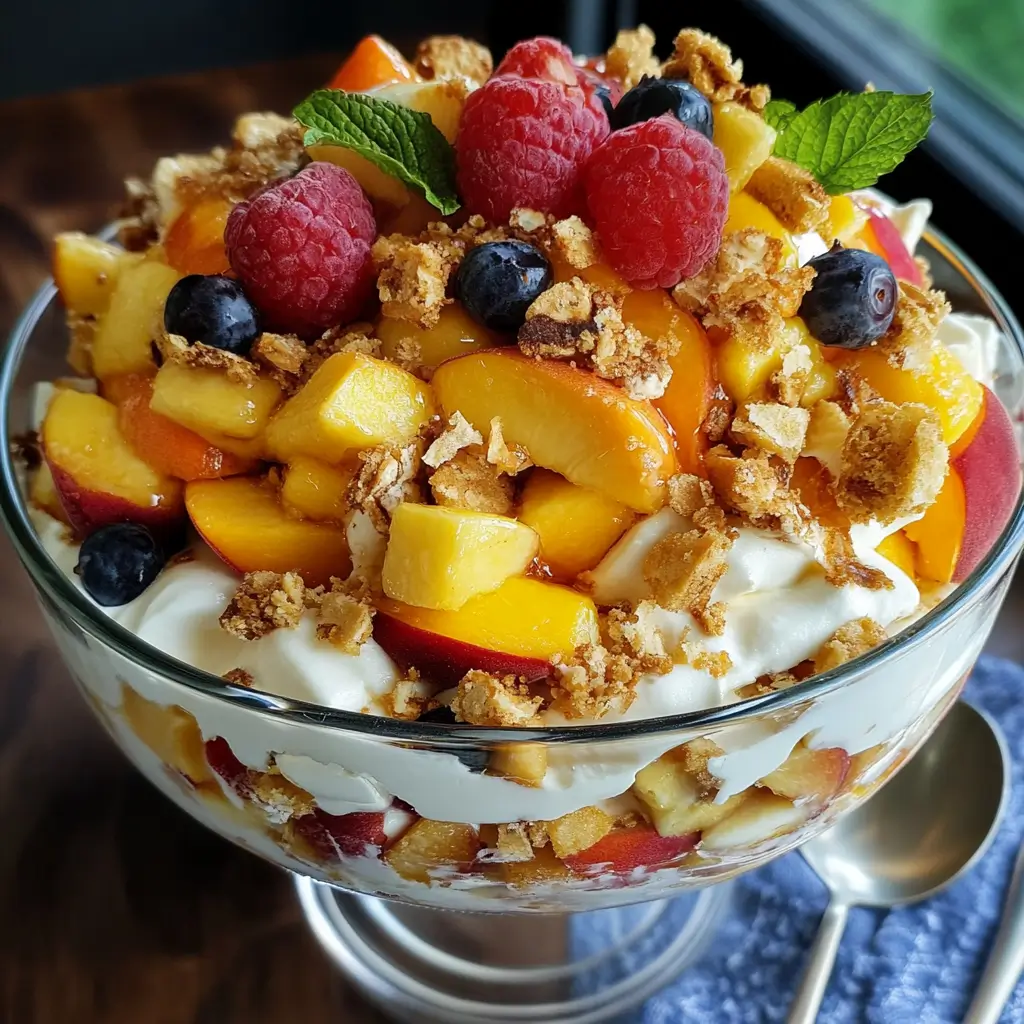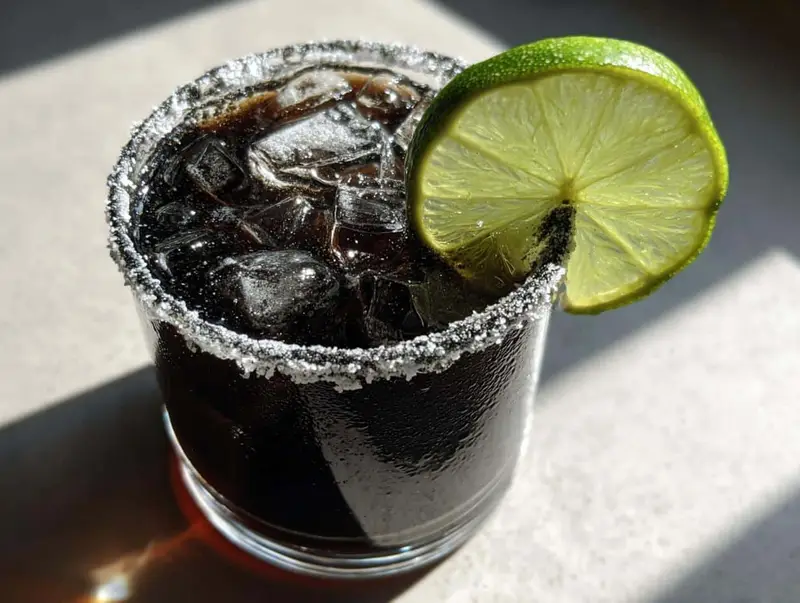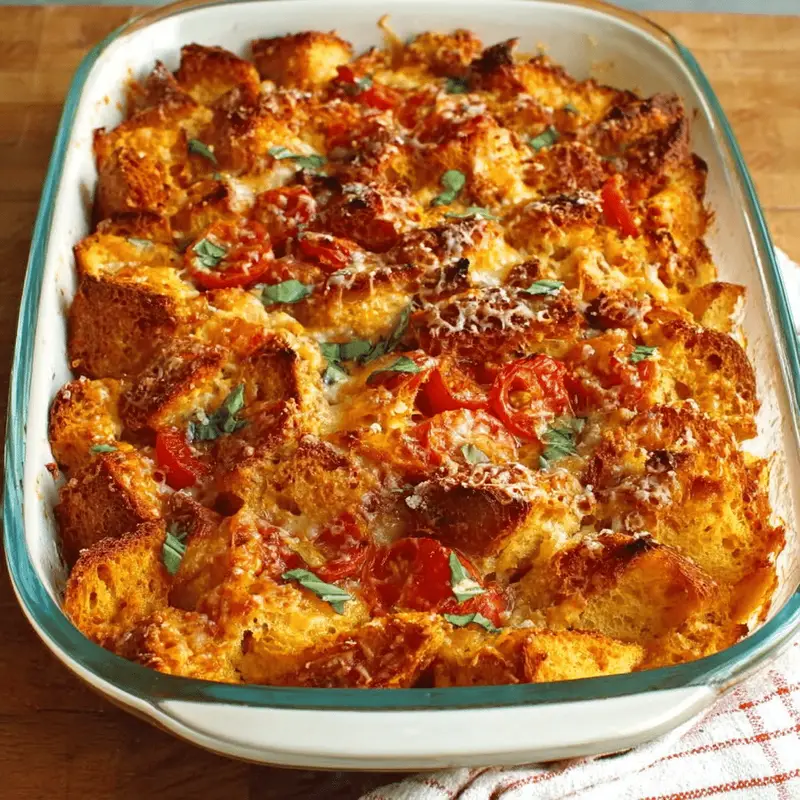Making homemade refrigerator pickled vegetables is one of my favorite ways to celebrate the season’s bounty. It’s quick, no canning is needed, and the result is a jar full of crisp, colorful veggies soaked in a tangy brine that pops with flavor. Whether you’re serving them at a picnic, alongside a sandwich, or snacking straight from the jar, these pickles are endlessly versatile. This guide walks you through everything—from choosing veggies to creating the perfect brine—so you can enjoy crunchy, vibrant pickles anytime. Plus, we’ll link you to some perfect pairings, like a light cucumber tomato salad or homemade roasted tomato sauce.
Introduction
There’s something so satisfying about slicing into a warm, fragrant loaf that smells like sunshine. This luscious lemon zucchini bread is exactly that—light, zesty, and impossibly moist. Whether you’ve got garden-fresh zucchini or a lingering craving for lemony sweets, this recipe delivers every time. It’s the perfect blend of subtle veggie earthiness and sweet citrus brightness. In this article, we’ll share the story behind this seasonal favorite, break down the key ingredients, and offer tips to keep your loaf irresistibly soft. Plus, we’ll show how it pairs beautifully with other recipes like our lemon blueberry bread or even summery pink lemonade cookies.
Luscious Lemon Zucchini Bread
Table of Contents
Part 1: The Story Behind These Homemade Refrigerator Pickled Vegetables
Why Pickling Feels Like Summer in a Jar
There’s something wonderfully nostalgic about homemade refrigerator pickled vegetables. Every summer growing up, my mom would slice carrots, green beans, and cauliflower, layering them with garlic and peppercorns in tall glass jars. She’d pour in the hot brine, and within a day or two, those veggies would magically transform—tangy, crisp, and just a little spicy. That briny aroma still reminds me of her kitchen windowsill, where the jars lined up like colorful stained glass.
Now that I make my own, I love how this recipe lets you use whatever’s in season. From crunchy green beans to sweet bell peppers, it’s a rainbow of flavor preserved in vinegar. Best of all, there’s no canning required. Just prep, pour, chill, and enjoy. It’s the ultimate lazy day preservation trick.
And the results? Absolutely addictive. I find myself reaching for a spear every time I open the fridge—especially paired with a grilled sandwich or as a side for pineapple cucumber salad. They brighten up any plate and add that fresh acidic balance that makes a dish sing.
Homemade Refrigerator Pickled Vegetables: Why You’ll Love Them
The beauty of homemade refrigerator pickled vegetables lies in their simplicity. You don’t need fancy equipment or a pressure canner—just a pot, a few clean jars, and about 15 minutes of prep time. The flavor is fully customizable, too. Like it spicy? Add more red pepper flakes. Prefer it sweet? A little extra sugar will do the trick.
And they’re ready fast—within 24 hours, your veggies are snackable. Unlike traditional pickles that can sit in a water bath canner for hours, these quick pickles keep their crunch and color. Plus, they make an excellent gift or a vibrant addition to summer charcuterie.
We’ve even used them as a topping for tacos and burgers. Try pairing them with a main like our ultimate potato salad or a chilled pasta dish. The flavor contrast will blow you away.
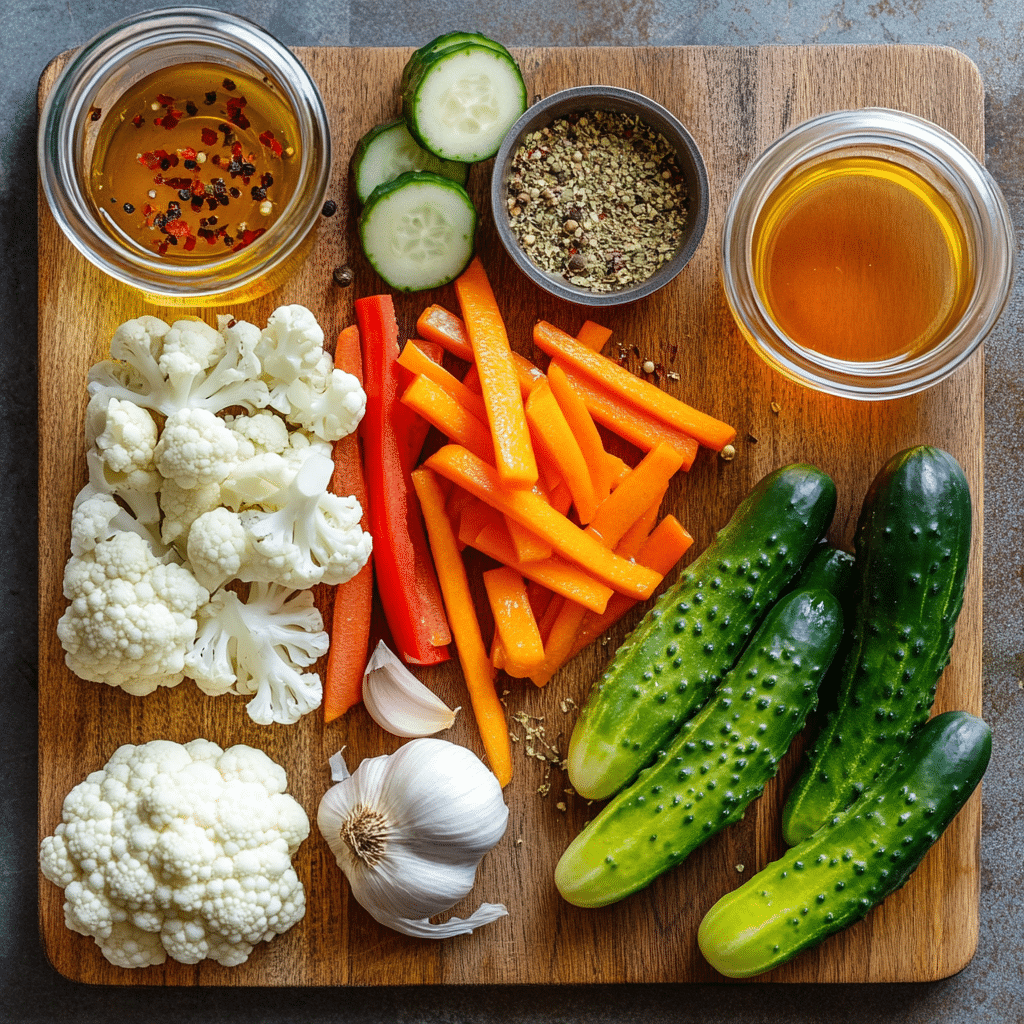
How to Make Refrigerator Pickled Vegetables (Step-by-Step)
Ingredients You’ll Need
This quick-pickling method uses pantry staples to bring out bold flavor in any mix of fresh vegetables. Here’s what you’ll need to make one large batch (fills about 2 quart-size jars):
- 2 cups cauliflower florets
- 1 cup sliced carrots
- 1 cup sliced cucumbers
- 1 red bell pepper, sliced into strips
- 1 cup green beans, trimmed
- 3 cloves garlic, minced
- 2 cups white vinegar
- 2 cups water
- 2 tablespoons salt
- 1 tablespoon sugar
- 2 teaspoons mustard seeds
- 1 teaspoon black peppercorns
- ½ teaspoon red pepper flakes (optional, for heat)
This combination of crisp veggies and warm spices delivers a flavor that pairs perfectly with hearty summer dishes like Frito corn salad or even a bold elote corn salad. You can also mix and match veggies based on what you have on hand.
How to Prepare and Pickle
Here’s how to bring this crunchy, tangy mix to life:
- Prepare your jars: Clean 2 quart-size glass jars (or 4 pint-size) thoroughly. Set aside.
- Chop your vegetables: Keep pieces uniform in size for even pickling. Pack them tightly into the jars, layering for visual appeal.
- Make the brine: In a medium saucepan, combine vinegar, water, salt, sugar, mustard seeds, peppercorns, and red pepper flakes. Bring to a boil and stir until salt and sugar dissolve.
- Add garlic and pour: Add minced garlic directly to the jars. Then pour the hot brine over the vegetables, leaving about ½ inch of space at the top.
- Cool and refrigerate: Let jars cool at room temperature for 30 minutes. Seal and refrigerate. The pickles will be ready in 24 hours but taste best after 48.
Once chilled, they’ll keep for about 2–3 weeks in the fridge—if they last that long. For a twist, try swapping white vinegar for apple cider vinegar, or add sprigs of fresh dill for herbal brightness.
Next time you’re making a sandwich or BBQ plate, these are the perfect side—like having your own deli-style pickles on hand with none of the fuss.t always earns compliments. Much like our peach blueberry crisp, this bread is a seasonal classic with timeless appeal.
How to Make Refrigerator Pickled Vegetables (Step-by-Step)
Ingredients You’ll Need
This quick-pickling method uses pantry staples to bring out bold flavor in any mix of fresh vegetables. Here’s what you’ll need to make one large batch (fills about 2 quart-size jars):
- 2 cups cauliflower florets
- 1 cup sliced carrots
- 1 cup sliced cucumbers
- 1 red bell pepper, sliced into strips
- 1 cup green beans, trimmed
- 3 cloves garlic, minced
- 2 cups white vinegar
- 2 cups water
- 2 tablespoons salt
- 1 tablespoon sugar
- 2 teaspoons mustard seeds
- 1 teaspoon black peppercorns
- ½ teaspoon red pepper flakes (optional, for heat)
This combination of crisp veggies and warm spices delivers a flavor that pairs perfectly with hearty summer dishes like Frito corn salad or even a bold elote corn salad. You can also mix and match veggies based on what you have on hand.
How to Prepare and Pickle
Here’s how to bring this crunchy, tangy mix to life:
- Prepare your jars: Clean 2 quart-size glass jars (or 4 pint-size) thoroughly. Set aside.
- Chop your vegetables: Keep pieces uniform in size for even pickling. Pack them tightly into the jars, layering for visual appeal.
- Make the brine: In a medium saucepan, combine vinegar, water, salt, sugar, mustard seeds, peppercorns, and red pepper flakes. Bring to a boil and stir until salt and sugar dissolve.
- Add garlic and pour: Add minced garlic directly to the jars. Then pour the hot brine over the vegetables, leaving about ½ inch of space at the top.
- Cool and refrigerate: Let jars cool at room temperature for 30 minutes. Seal and refrigerate. The pickles will be ready in 24 hours but taste best after 48.
Once chilled, they’ll keep for about 2–3 weeks in the fridge—if they last that long. For a twist, try swapping white vinegar for apple cider vinegar, or add sprigs of fresh dill for herbal brightness.
Next time you’re making a sandwich or BBQ plate, these are the perfect side—like having your own deli-style pickles on hand with none of the fuss.
Part 4: FAQs and Final Thoughts on Quick Pickling
Frequently Asked Questions
How long do refrigerator pickled vegetables last?
They’ll keep in the fridge for 2 to 3 weeks. Always use a clean utensil to remove veggies from the jar, and discard if you notice any off smells or cloudiness.
Do I need to sterilize the jars?
Not for refrigerator pickles. Clean them well with hot, soapy water and dry thoroughly—sterilizing is only necessary for shelf-stable canned goods.
Can I reuse the brine?
Technically yes, but it’s not recommended. Reused brine may not maintain proper acidity for preservation and can lead to soggier pickles.
Can I use frozen vegetables?
Stick to fresh vegetables for best results. Frozen ones lose texture and turn mushy during pickling.
Conclusion
Refrigerator pickled vegetables are one of the easiest, most satisfying kitchen projects you can take on. In under 20 minutes, you’ll have jars full of tangy, crisp veggies ready to brighten any meal. They’re colorful, customizable, and don’t require any special tools or techniques.
Whether you’re loading them into lunchboxes, layering them into burgers, or adding them as a side to your ultimate potato salad or a hearty cucumber tomato salad, they deliver a pop of flavor and crunch every single time.
Print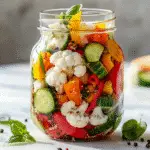
Luscious Lemon Zucchini Bread: A Moist & Bright Summer Favorite
- Total Time: 20 minutes
- Yield: 8 servings 1x
- Diet: Vegetarian
Description
These homemade refrigerator pickled vegetables are crisp, tangy, and quick to prepare—no canning needed. Perfect for snacks, sides, or picnics!
Ingredients
2 cups cauliflower florets
1 cup sliced carrots
1 cup sliced cucumbers
1 red bell pepper, sliced into strips
1 cup green beans, trimmed
3 cloves garlic, minced
2 cups white vinegar
2 cups water
2 tablespoons salt
1 tablespoon sugar
2 teaspoons mustard seeds
1 teaspoon black peppercorns
½ teaspoon red pepper flakes (optional, for heat)
Instructions
1. Clean 2 quart-size glass jars thoroughly.
2. Slice vegetables uniformly and pack them tightly into jars.
3. In a saucepan, bring vinegar, water, salt, sugar, and spices to a boil until dissolved.
4. Add garlic to jars. Pour hot brine over veggies, leaving ½ inch of space.
5. Let cool for 30 minutes, then seal and refrigerate.
6. Chill for at least 24 hours before eating. Best after 48.
Notes
Store pickles in the fridge for 2–3 weeks.
Add fresh dill, jalapeños, or switch up the veggies for different flavor profiles.
Use glass jars with tight-fitting lids for best results.
- Prep Time: 15 minutes
- Cook Time: 5 minutes
- Category: Snacks
- Method: Pickling
- Cuisine: American
Nutrition
- Serving Size: 1/2 cup
- Calories: 35
- Sugar: 1g
- Sodium: 320mg
- Fat: 0g
- Saturated Fat: 0g
- Unsaturated Fat: 0g
- Trans Fat: 0g
- Carbohydrates: 7g
- Fiber: 2g
- Protein: 1g
- Cholesterol: 0mg
